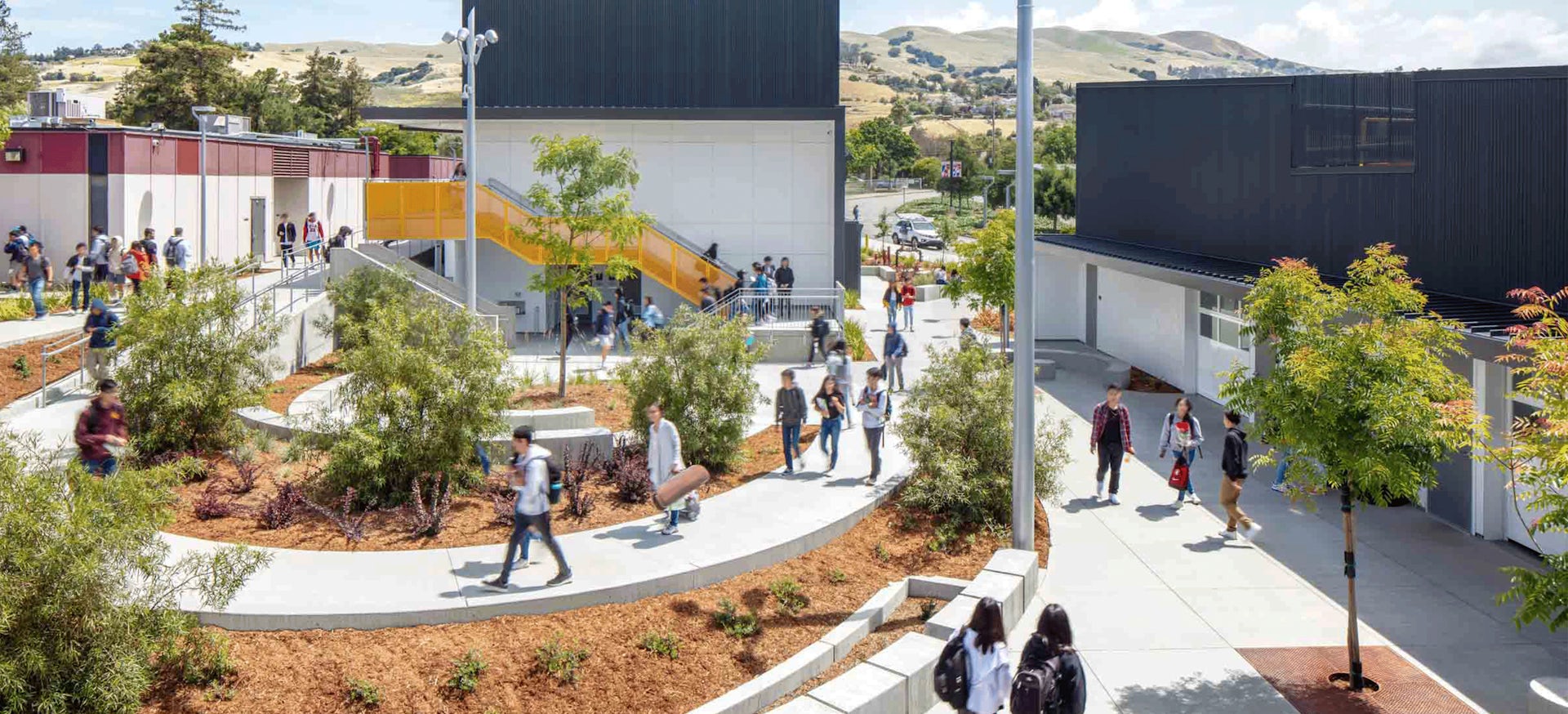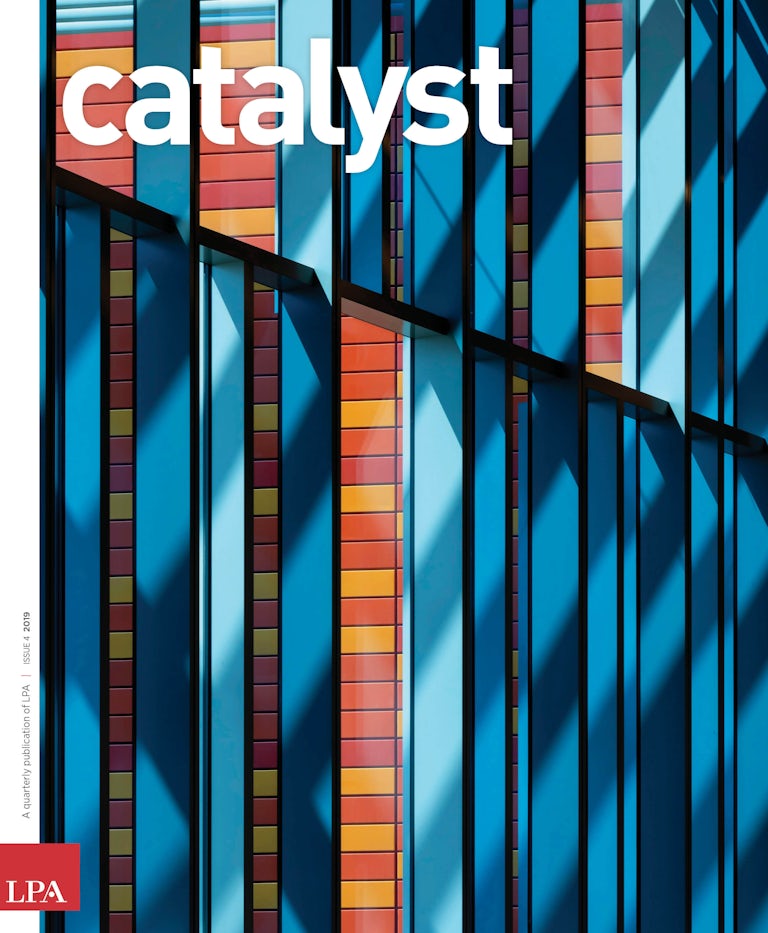The design for the Piedmont Hills High School Sciences and Life Skill Complex is an example of how a small project on a difficult site with a limited budget can meet the goals of educators and set an example for sustainability.
Located in eastern San Jose, California, the school identified a pitched, one-acre site, wedged between an existing football field and parking lots, as the site for its new science facility. Administrators wanted the 16,500-square-foot project to reflect the school’s growing interest in the sciences and set a new standard for the design of future learning areas at the school, which has had few upgrades since opening in 1965.
But there was limited space—and a limited budget—to achieve the educators’ objectives for the 2,100-student campus.
Making Science Fun
Design for high school science center overcomes challenges to create modern, energy-efficient, indoor-outdoor learning environments.

Designers embraced the task, creating two buildings with pitched roofs—a larger, L-shaped structure containing science labs and a smaller building for traditional classrooms. The design creates an efficient, airy complex, which offers spaces for indoor and outdoor science instruction and serves as a dynamic second entry point.
The two buildings frame a courtyard, where LPA created a student-centric teaching space with amphitheater-style seating. The sheltered courtyard side of the laboratory building features storefront windows and glass roll-up doors, allowing for efficient deliveries of supplies and equipment and easy in-and-out access.

The administrators wanted the overall science area to have its own feel and make science fun. To help create different energy in each classroom, LPA designers chose radically different industrial materials for the spaces, including metal panels and fiber cement board panels, in lieu of traditional batten-and-stucco construction.
“Punched windows bring in a playful band of light to highlight the interior spaces,” says Denise Flatley, Project Manager for LPA.
To save on costs, in the short term and long term, designers devised efficiencies throughout. The design of the smaller building takes advantage of the site’s natural topography with an easily accessible ramp that connects the upper floor to the lower floor, eliminating the need for an elevator. Natural ventilation and high-efficiency HVAC help cut energy use; the building’s orientation and self-shading reduce solar gain.
The design also found innovative ways to handle water, providing a teaching lab for students. The pitched roofs aid in collection of rainwater, which is fed into bioretention areas for filtering.
The school opened to instruction in January, and teachers and students are already embracing the facility and looking for the best ways to use the spaces. AP Biology and Forensics teacher Jason Dries appreciates the rolling doors, which open rooms to the outdoors and make deliveries easy.

Catalyst“They’re kind of wonderful in terms of being able to open them for quick ins and outs,” Dries says. “Chemistry loves them because they can ventilate a room in seconds, should a bad reaction or smell arise.”
Inside the science rooms, Dries has been impressed by the wide-open lab stations and distinctive color combinations. Shelves are a light maple, contrasting nicely with a gray accent wall that sets the rooms apart. The black countertops made of epoxy resin are “every science teacher’s dream: clean, sanitary, impervious to scratches, acids, bases, heat and almost any mishaps,” he says.

The new facility also allows him to incorporate the outdoors into his curriculum. For one project, he sent his students out to gather specimens for biology labs. Physics has used the outside space for frequent rocket launches, which help students determine optimum trajectory and force to achieve a set distance, he says.
There is a single tree—either Chinese pistache or paperbark maple—outside each lab, with an arced, poured-in-place concrete bench. As students grow more accustomed to the facility, they have been gravitating to these areas for conversation and collaborative learning.
“We know learning happens everywhere,” Pierce says. “The more areas we create—inside or out—where students and teachers can gather and share knowledge, the better.”
This story originally appeared in Catalyst Issue 4 2019. Subscribe today to receive Catalyst, a quarterly publication that takes a deep dive into design ideas, industry leaders and initiatives.















